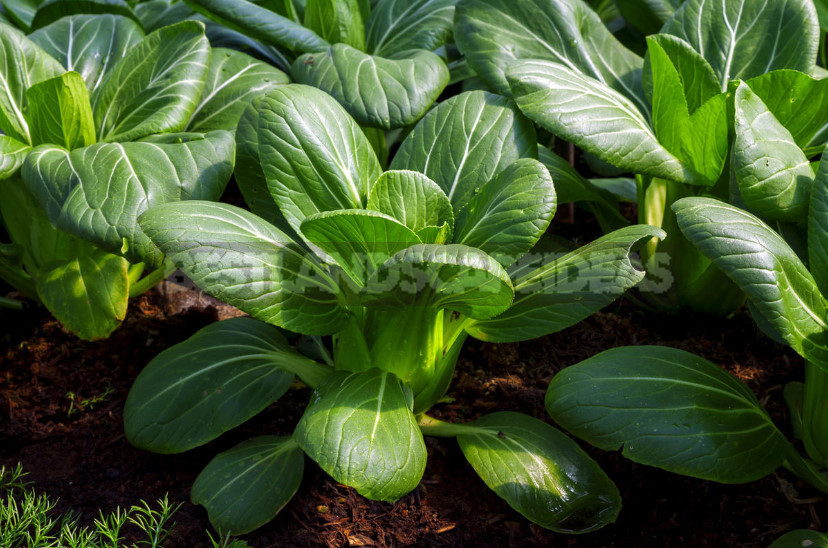
If your table regularly appear salads from fresh cabbage or Peking cabbage, then you will certainly be interested in a close relative of these cultures – cabbage Pak Choi. This Chinese woman (Brassica chinensis) is not often found in our beds, which certainly need to be corrected. After all, vitamin pack Choi, unlike its cabbage sisters, has a more docile nature and begins to ask for a table a month after planting.
Plant description
This leafy variety of cultures of the family Brassicaceae is also called celery or mustard cabbage for the incomparable taste of juicy crispy leaves, characterized by soft spicy notes and a very pleasant aftertaste. Therefore, Asians-lovers combine in one dish exquisite taste and a pile of vitamins, have long noticed this plant and everywhere grow it for many centuries.
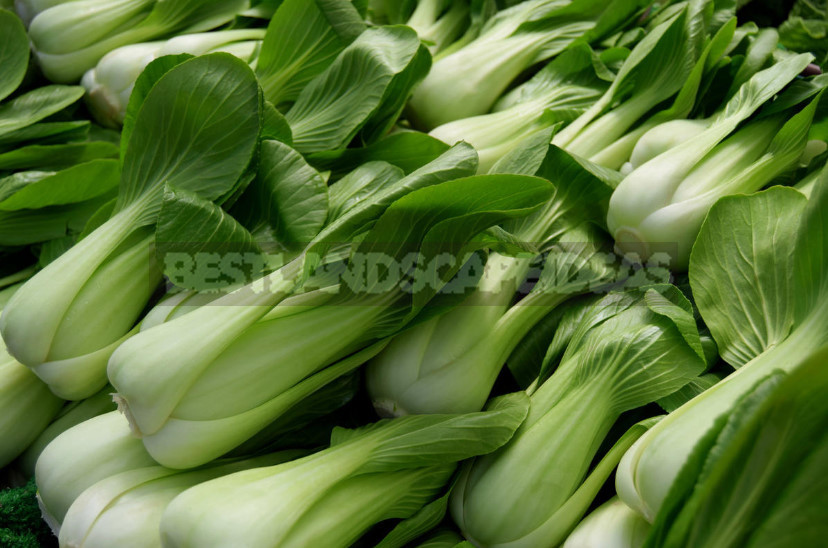
And the benefits for the body from eating Pak Choi is really priceless. From its beautiful leaves literally jump vitamins C, K, PP, a, B1 and B2, as well as essential phosphorus, potassium, magnesium, iron and calcium. It adds the advantages of a high content of lysine, fiber, pectin compounds, biologically active enzymes and citric acid. And the best part: Pak Choi can be used in unlimited quantities, thereby increasing the tone of the body. In 100 g of this dietary product contains only 13 kcal, which in no way affect the waist.

In addition, this Chinese woman allows her to carry out a variety of culinary manipulations. Its leaves are suitable not only for making fresh salads and snacks, but also for cooking, stewing, frying, baking and marinating.
Delightful Pak Choi decorate not only the table, but also the garden, because it forms a very decorative rosette of leaves, like a fancy vase. Depending on the variety, such a “vase” reaches a height of 20 to 50 cm, a diameter of 40-45 cm and can have a different color of stalks and leaves.

In the first year of life, this two-year plant forms a rosette of leaves, and in the second season throws a high peduncle. After flowering, numerous seeds ripen, which can be used for further reproduction.
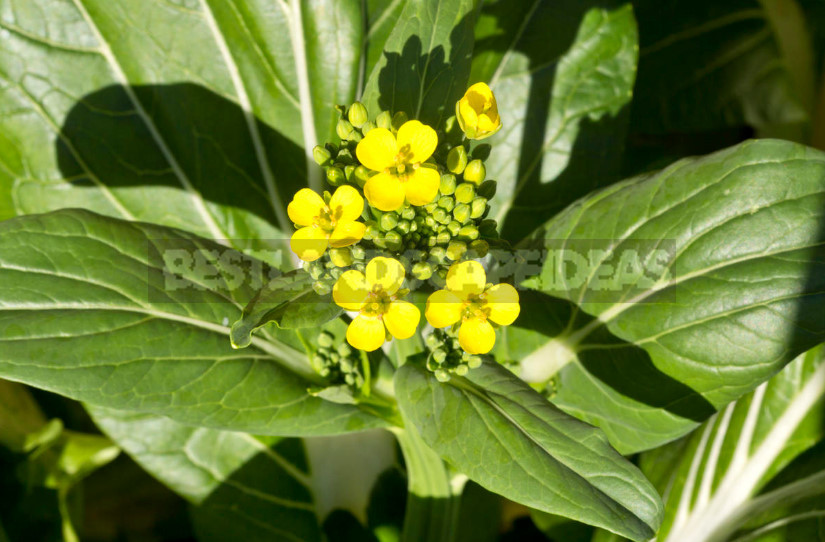
Cultivation
Pak Choi is not picky in cultivation and is characterized by high disease resistance. It tolerates spring and autumn cold, so it will be a great addition to the usual diet in these “vitamin” periods. Unlike the obstinate white cabbage, this will tolerate any type of soil on the site and will not require such careful preparation of the bed for planting.
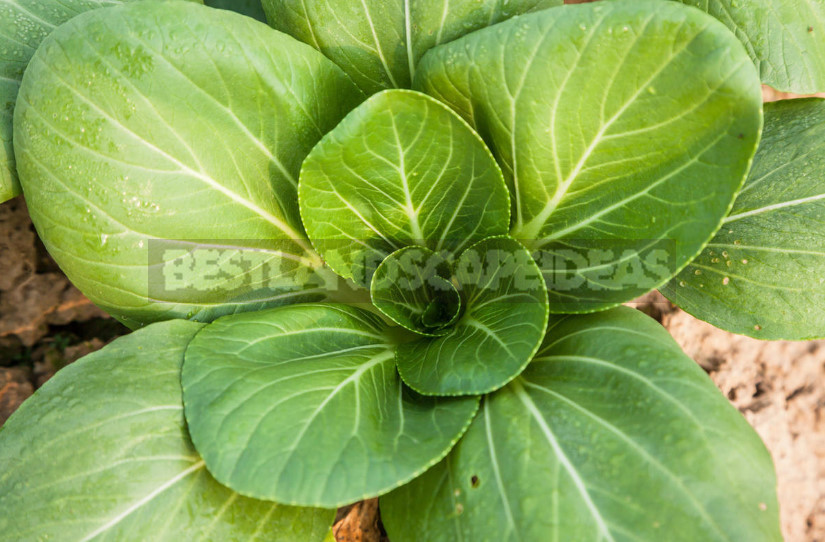
Amazing Pak Choi feels great in cool, chilly weather and easily withstands short-term frosts to -4°C. Therefore, the most favorable period for its sowing will be early spring, the second half of summer and autumn. During these periods, nature usually does not skimp on precipitation and reduces the length of the day. But the long June and July days are not very good for the Chinese woman and often make her go to the arrow.
Landing
Seeds Pak Choi can be sown in the garden in April – they germinate at a temperature of + 3… + 4°C. at the same time sowing is best done in small batches at intervals of 7-10 days. This will allow you to get a conveyor of juicy vitamin greens, because Pak Choi is most delicious at a young age, and when it grows quickly coarsens.

If you plan a spring planting, the bed for this culture is better to prepare in the autumn. To do this, you need to choose a well-lit area, which previously grew pumpkin or legumes. It is important that the selected bed does not stagnate water after precipitation.
Then you need to make each m2 of 0.5 buckets of humus, 2 tablespoons of superphosphate, 1 tablespoon of potassium sulfate (or replace fertilizers 1-1.5 Cup of wood ash) and dig the soil on the bayonet shovel.

If the soil on the site is acidic, then the soil is additionally sealed with slaked lime, chalk or dolomite flour according to the instructions. On heavy soils, the soil is better to loosen, making under digging coarse sand or rotten sawdust.
In the spring with the onset of good weather the garden is cultivated, level and make shallow furrows with a spacing of about 30 cm. Moisturize and then cover seeds to a depth of 0.5-1 cm Below the seeds quickly sprouted, it makes sense for 1-2 days before planting to soak them in a solution of micronutrients. With this approach, friendly shoots will appear for 3-4 days.
When the seedlings form a pair of real leaves, they need to thin out, leaving an interval between the sprouts of 20-40 cm (depending on the strength of the growth of the rosettes of the planted variety).
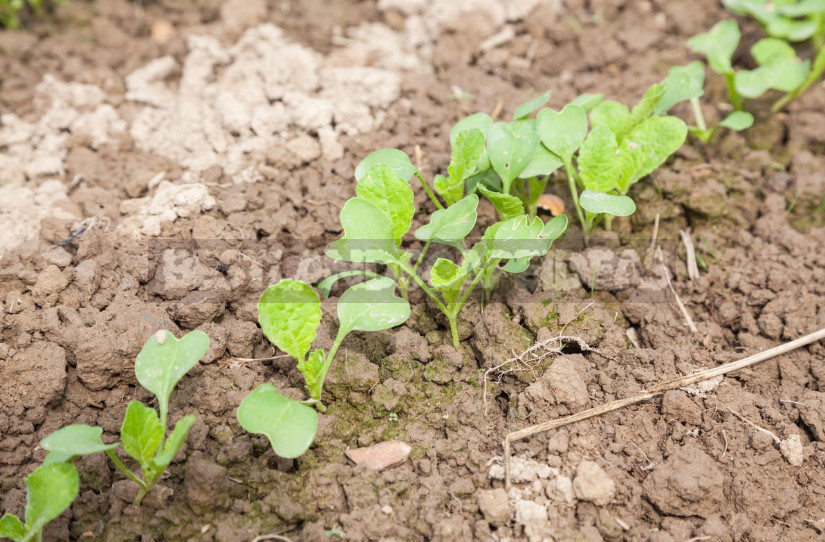
Seedling method
If you want to get delicious leaves of this crop early, it can be grown through seedlings and planted on the bed at the age of 15-20 days, when the temperature in the greenhouse or outside (when grown in the open ground) rises to +15…+17°C. in this case, wetted seeds are sown in pre-prepared containers from late March to mid-April (depending on the region of cultivation and the expected date of planting on the bed).
In order not to disturb the seedlings with a dive, which they do not tolerate very well, it is better to sow the seeds in separate containers. To do this, in each pot or cell of seedling cassettes, two seeds are planted, and with the appearance of sprouts, a stronger specimen is left.

Care for seedlings Pak Choi as well as seedlings of cabbage. In the phase 4-5 of these leaves, the hardened seedlings are transplanted to a prepared bed in a greenhouse or open ground.
Continue read the article Cabbage Pak Choi: Cultivation, Varieties (Part 2).
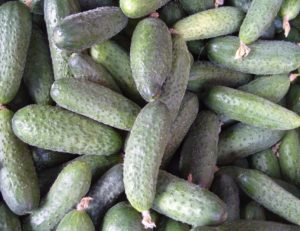
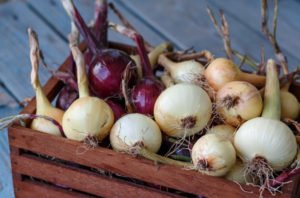
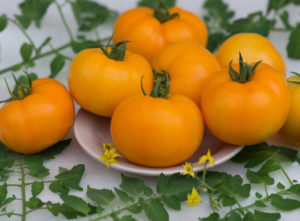
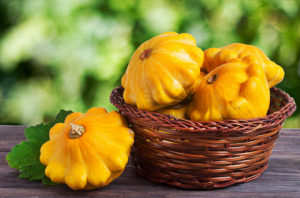
Leave a Reply